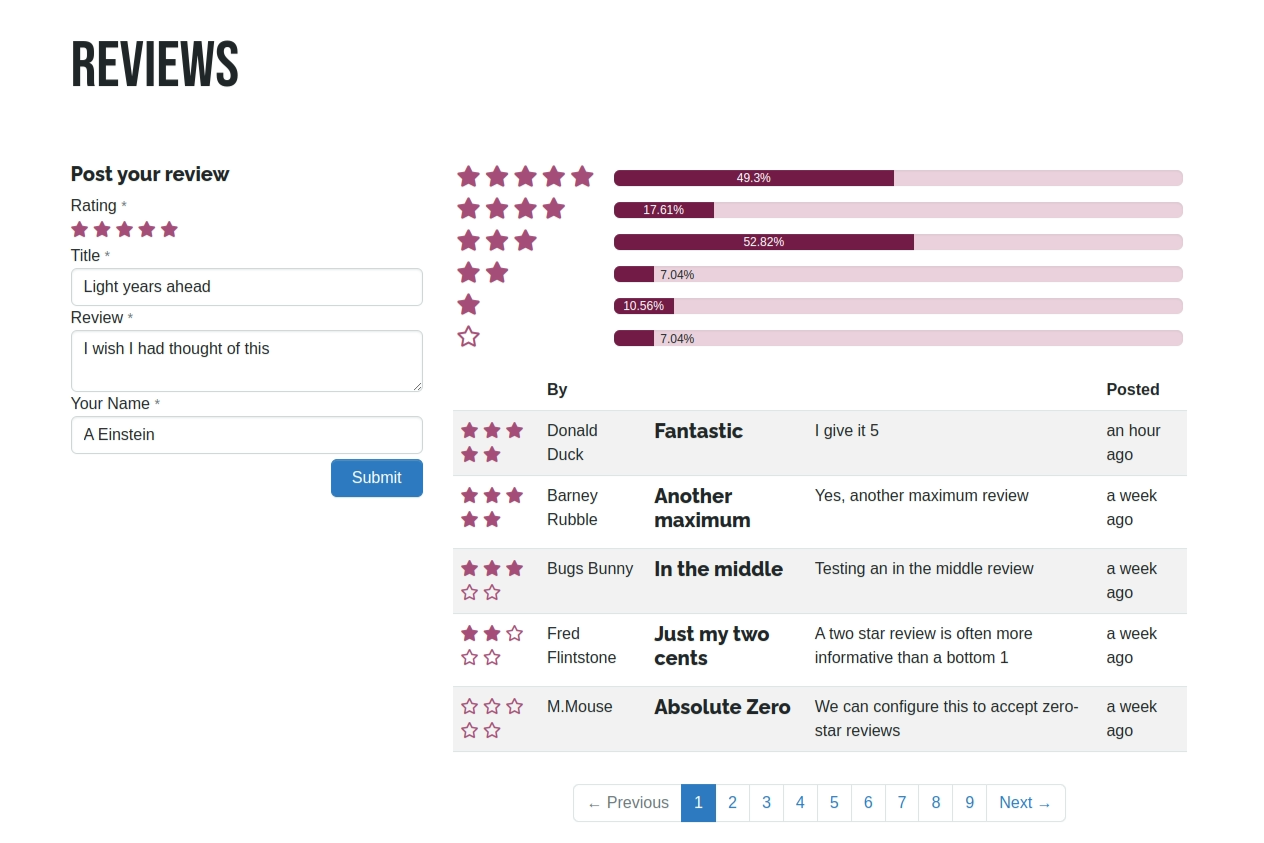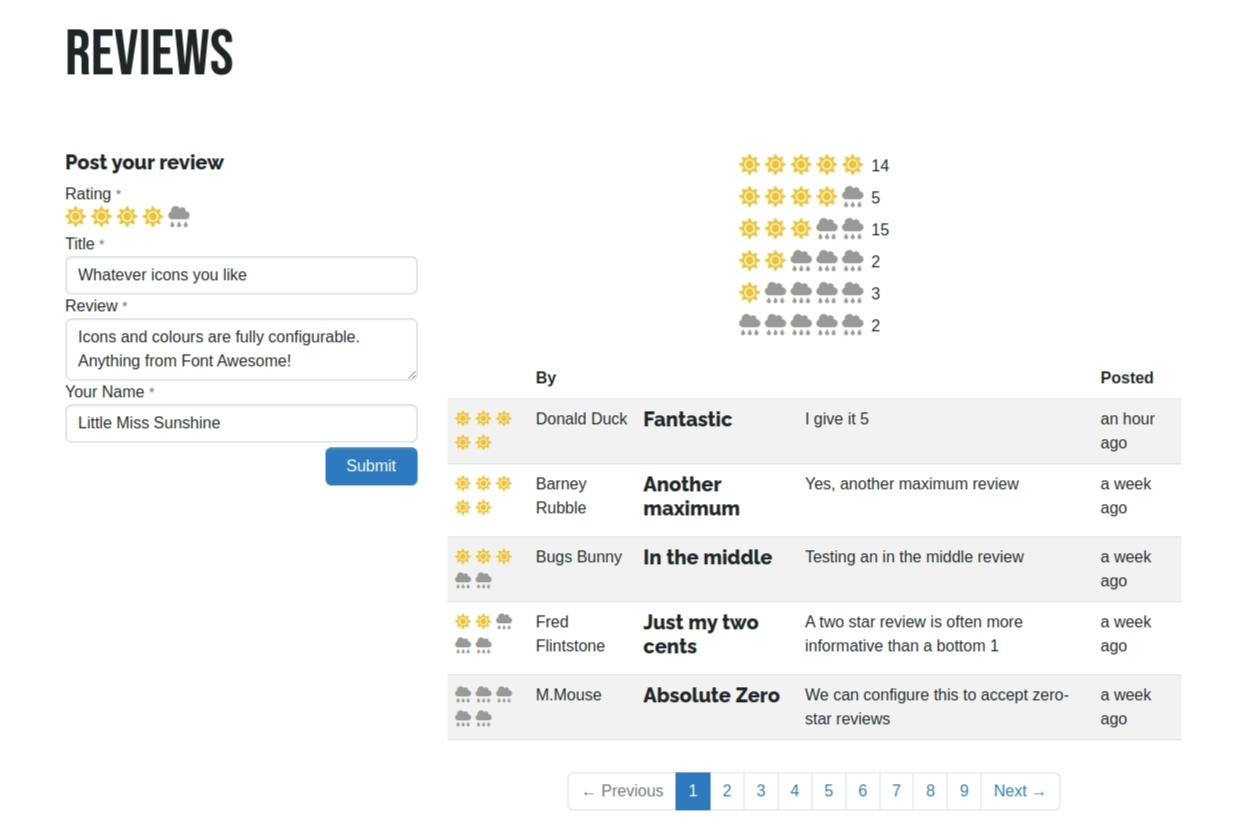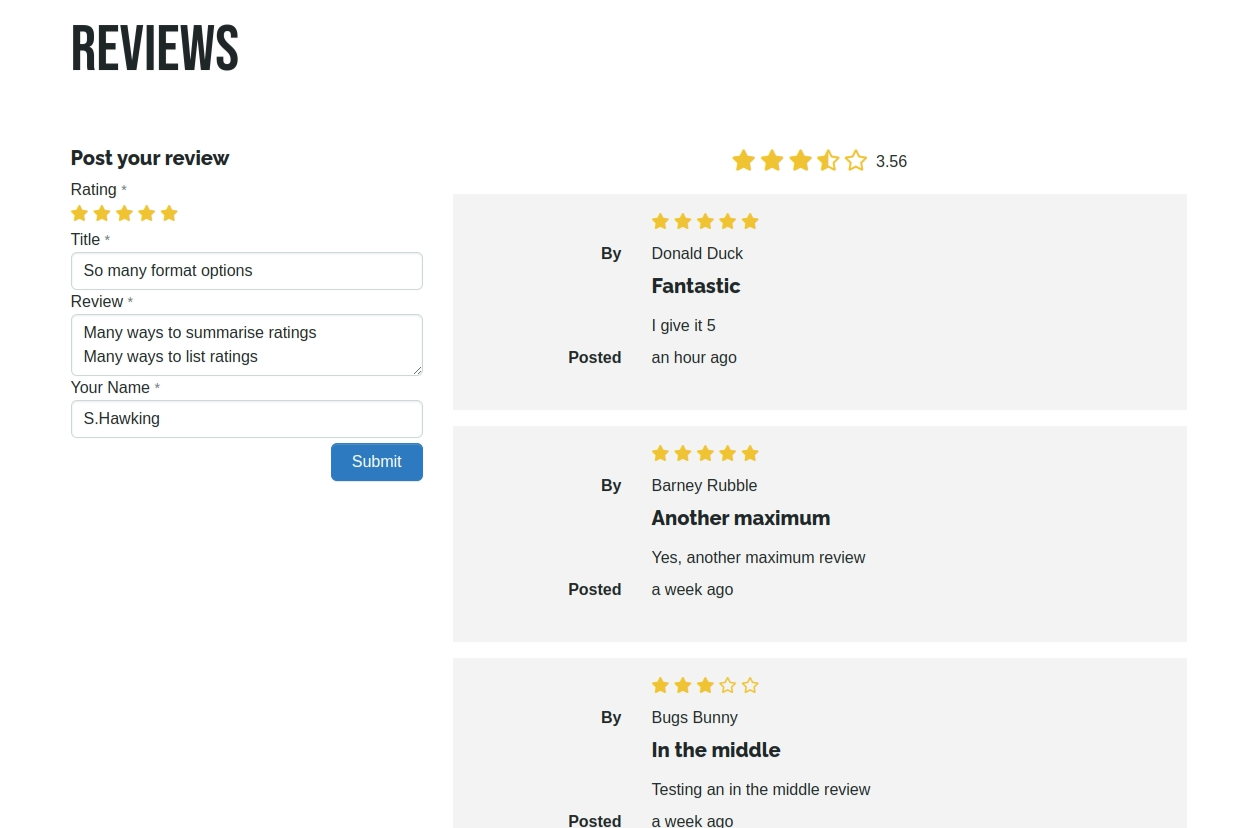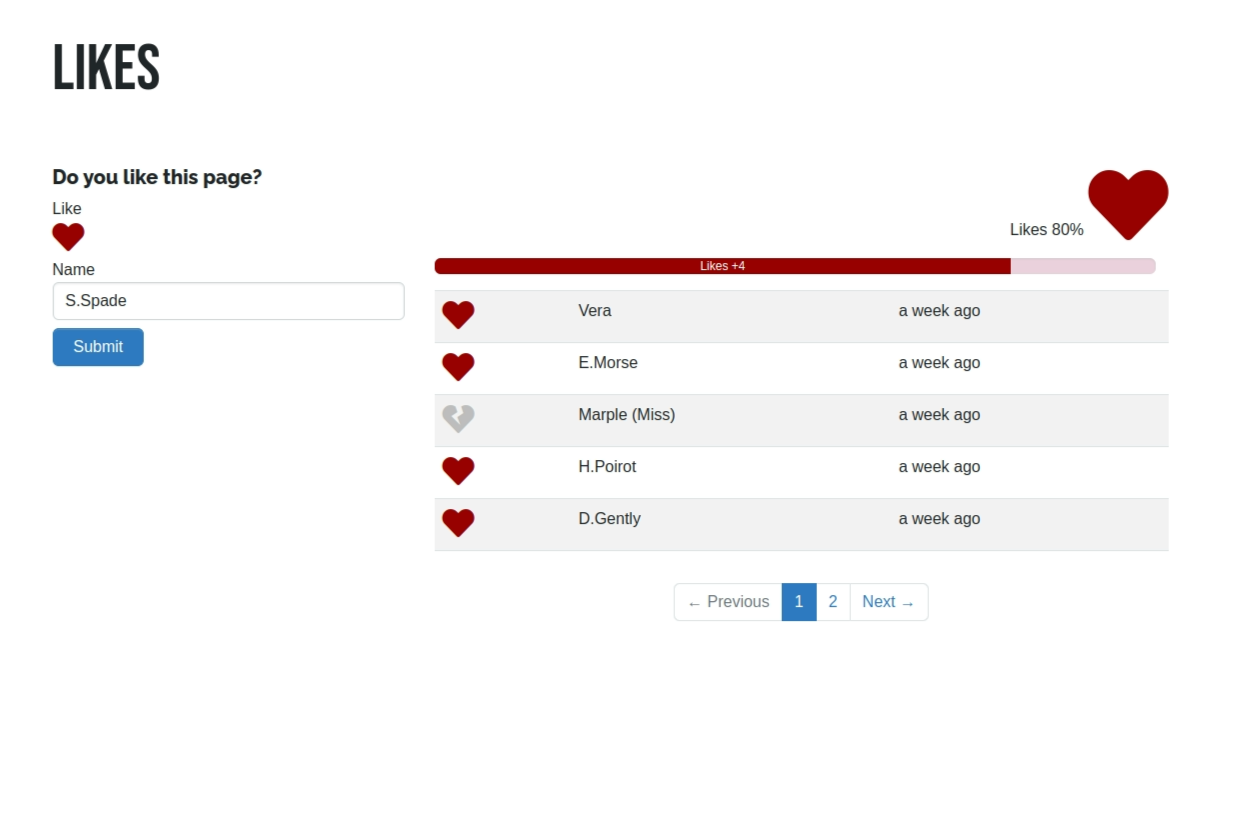Managing Reviews
As it stands, the reviews successfully posted from Getting Started with Reviews will become immediately part of the display and summary. You could leave it there and merely check occasionally and use the dashboard at Reports > Form Reform to cull spam.
Or you could take it further and use Form Reform Data Picker to build a review approval and response workflow.
A simple status flag
- In the submit pipeline for the review posting form, add a handler to inject a 'status' field with the status 'unapproved' to the form submission just before it is saved.
- In the public display of reviews, filter the listing of reviews and summary of reviews to only show status 'approved'
You could again leave it there and use the dashboard at Reports > Form Reform to edit the status of approved reviews to 'approved'. If you only have a few reviews, this is the simple solution.
Adding a review management workflow page
The next step of building a review management system is to create a page only available to your administrators. Create the page and set the page permissions. On that review management page, use the Rating List block add a list of reviews where the status is filtered to those not 'approved'.
Also on this review management page now build an approval form, where the main control is a Result Picker from Form Reform Data Picker to pick one or more reviews from the list of unapproved reviews.
This form can have 2 submit buttons:
- Reject - where the pipeline uses a Delete handler to delete the rejected reviews.
- Approve - where the pipeline uses an Update Default Store handler to change the status of picked reviews to 'approved'.
Responding to reviews
This administration form can be further developed with a Textarea input field for the administrator's response.
When a review is rejected, you could use this field to send an email to the review writer explaining why, or you could just black hole them.
When a review is approved, any response text and the identity of the administrator responding can be added to the review.
Further embellishment
Once you have the idea of using one or more status fields to manage a workflow of forms involving more than one user, the opportunities for building more complex workflows are limitless. You can build chains of form submissions referring to previous submissions referring to previous submissions and more.
The main consideration for a more complex sequence of responses to a review or other initial form is that you may want to build a custom results display block view to show such chains of associated form submissions.
Whilst the workflow is built on front end pages using permissions to manage who can do what, your workflow management could be associated visually with the dashboard by using the Frontend Dashboard Theme.





